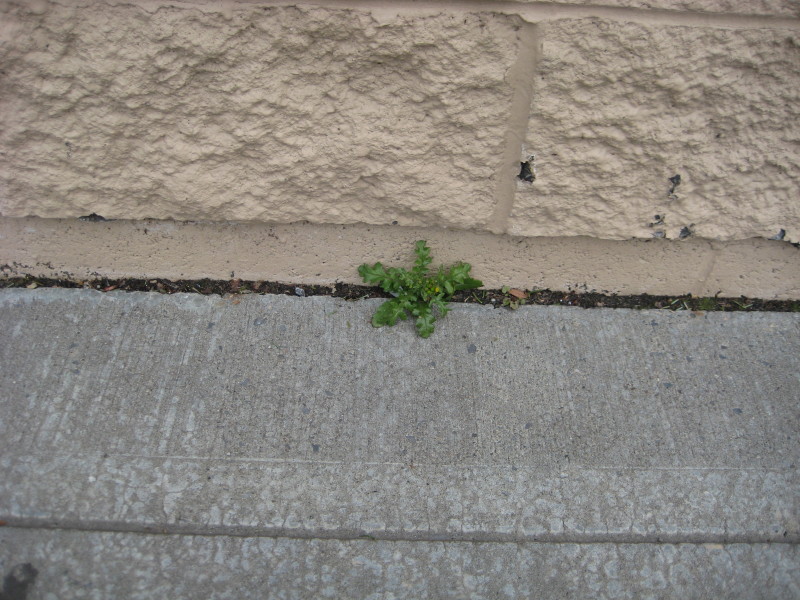Groundsel. A tiny plant, growing close to the ground. A dandelion relative, a hardy little plant, able to cope with the forbidding habitat of the Price Chopper parking lot.
Common Groundsel is a European plant, (Senecia vulgaris) like so many that sneaked over centuries ago. The word groundsel is very ancient—the first recorded use of the word is before the 12th century, and it was probably used well before that. It’s such a humble plant, you’d think it hardly worth mentioning. Wikipedia describes it as a plant that’s “easy not to notice.”
The name comes from ground Old English grundeswelge, from grund ground + swelgan to swallow. But why is this? Why did the ancient Anglo-Saxons, no fools where botany was concerned, use the word swallow in describing this inconspicuous little pasture flower?
Well, it must be tasty, you’d think, a likely salad green. But it’s resoundingly not edible. Many species of the genus Senecio contain significant amounts of pyrrolizidine alkaloids, nasty toxins which cause irreversible liver damage over time. This is, in fact, a plant that you definitely don’t want to swallow. It was, and is, sometimes used as an herbal medicine, mostly as an emetic (to make you throw up) but even small amounts can cause liver damage, so groundsel tea is not a natural cure to experiment with.
It can poison cattle and horses as well as humans, and so it would be an unwelcome sight in a pasture, where the aggressive little plant would be a threat to grazing livestock. I would suspect that the Anglo-Saxons saw groundsel not as a plant to swallow, but as a plant that would swallow the ground, growing unchecked over the fields, taking over whole pastures.
This grocery store sits on what was once undoubtedly farmland. This groundsel is a tiny remnant of a long-gone pasture. The cows and horses are gone but the the powerful little poisoner still lurks outside Price Chopper.





I’m almost sure that a Farmer’s Market near me is selling this plant as Milk Thistle. As I’ve been using this as my stir fry greens and liver tonic, I’m concerned that it may have had the opposite effect! Any advice, other than stopping eating it and reporting my suspicions to the seller? Maybe dose up on genuine Milk Thistle tabs…
It’s very hard to know what you’re getting with herbals, even those that come from stores or in pill bottles, since there is little or no FDA control over them. Milk thistle should have purple flowers, and groundsel is yellow, so they’re easy to tell apart when the plant is in flower. Milk thistle leaves have whitish veins, and groundsel doesn’t. But when dried or cooked, all leaves look pretty much alike. It would take a better botanist than I am to tell for sure. Sounds like talking to the seller is a good first step–see if they’ve ever heard of groundsel and if they’re aware of the dangers of poisonous “look-alikes.” Do they grow milk thistle or do they forage? Maybe a botany professor at a local college or a museum could help you find out for sure? Best of luck!
It is used as a poltice for reducing swelling and fevers and can be used in a milk bath to soften the skin, as well.
How interesting! I didn’t realize that. Thanks!
Wow. Tiny devil lurking. Sounds like the makings of a great mystery novel plot!
Yes, I would think poison would be hard to detect as a cause of death, particularly in the past.